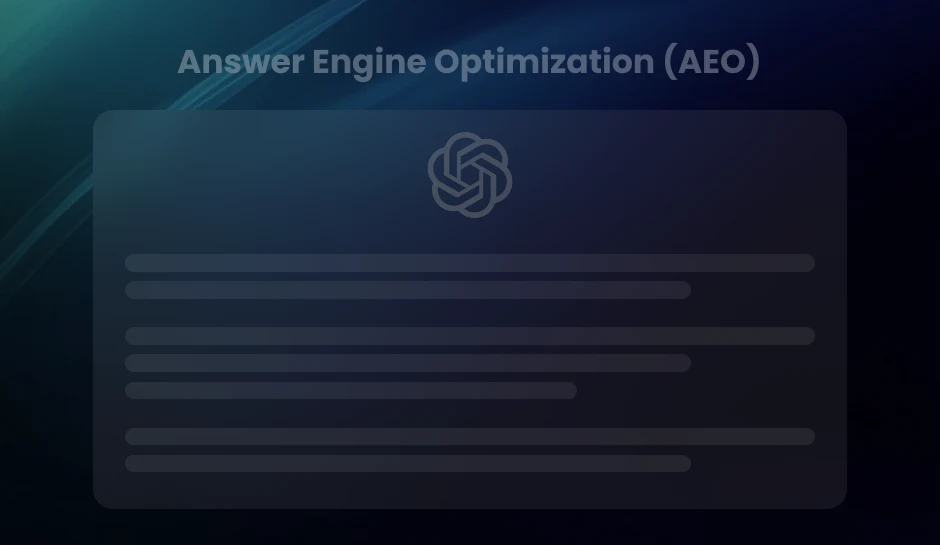
Target Metrics: A Strategic Guide to Performance Excellence
Go through this blog to learn about the key target metrics that will help you comprehend and analyze the performance of your business and allow you to make the required updates and changes to achieve better numbers.
Target Metrics, the quantitative benchmarks set to measure the path towards your goals, are pivotal in tracking performance and steering growth. Unlike generic performance indicators, Target Metrics are customized yardsticks tailored to align with your organization’s unique objectives, providing a focused and strategic approach to performance measurement. They offer insight into how effectively a company is progressing toward strategic goals and can significantly differ from general metrics, which might need to represent the nuances of your specific aims fully. This blog will explore the operational blueprint for identifying and utilizing Target Metrics to optimize results and surpass performance thresholds, setting a new industry standard in data-driven success.
Understanding the Importance of Goals and Objectives in Metric Measurement
Setting clear goals and objectives is the cornerstone of any successful business strategy. These aims provide direction and are the fundamental criteria for evaluating a company’s performance. By aligning target metrics with business goals, organizations can ensure they are on the right path to achieving their mission.
Aligning Target Metrics with Business Goals
Measuring progress and performance becomes easier when the target metrics are directly connected to business goals. This alignment ensures that every team within the organization works towards the same end, leading to a more focused and united effort toward success. It is crucial to identify the right metrics to track, as they should reflect the company’s key objectives and drive the desired outcomes.
The Relationship Between Goals and Business Outcomes
There is a direct correlation between well-defined goals and positive business outcomes. When goals are specific and actionable, they guide decision-making and strategy implementation. The target metrics enable companies to track these goals’ progress, providing real-time feedback to inform future actions. Thus, monitoring these metrics is essential to maintaining an upward trajectory toward business objectives.
The Power of Key Performance Indicators (KPIs)
Key Performance Indicators (KPIs) are vital performance measurement and management tools. Their primary purpose is to connect day-to-day operations with overall business objectives, serving as a bridge to the broader target metrics your organization aims to achieve. Businesses can gauge progress, pinpoint inefficiencies, and drive strategic decision-making by meticulously tracking KPIs.
Ensure at least one identical metric for different departments at each stage of your sales funnel. Thus, when the responsibility goes to another team, they will still have a common goal to achieve. Also, make sure that there are no mutually exclusive KPIs. For example, increasing conversion to paying customers for the product team while increasing the number of demos for the marketing team.
martech.org
Decoding KPIs and Their Impact on Target Metrics
KPIs are not merely numbers to chase; they represent a set of quantifiable measures that directly reflect an organization’s success or progress toward its strategic goals. Each KPI is a beacon that guides a company toward its target metrics, allowing teams to understand whether they’re on the right path or need to pivot their strategies.
The Crucial Role of KPIs in Identifying and Solving Issues
KPIs are indispensable in the troubleshooting process. By providing real-time data, organizations can identify problems quickly and make informed decisions to rectify them. The ultimate aim of monitoring KPIs is to anticipate challenges before they escalate and fine-tune operations, ensuring sustained progress towards achieving target metrics.
SMART Criteria for Target Metrics
Establishing target metrics is crucial for any business strategy, but how can we ensure these metrics are actionable and effective? The key is to apply the SMART criteria. This well-recognized framework enhances the relevance and attainability of your objectives.
Breakdown of the SMART Acronym in the Context of Target Metrics
The SMART acronym stands for Specific, Measurable, Achievable, Relevant, and Time-Bound. When setting target metrics, this framework can be a powerful tool for clarifying goals, focusing efforts, and using time and resources productively.
- Specific:
- Measurable:
- Achievable:
- Relevant:
- Time-Bound:
Your target metric should be clear and concise, detailing exactly what you aim to achieve.
You need to be able to track progress and measure the outcome to determine success.
While ambition is important, your targets should be realistic and attainable to motivate your team.
Each metric should align with broader business objectives to ensure it contributes to overall success.
Setting deadlines creates a sense of urgency and helps prioritize tasks to meet your objectives.
Setting SMART Target Metrics
Applying the SMART criteria to your target metrics engenders a structured approach that can significantly impact your business’s strategic outcomes. For instance, rather than simply aiming to “increase sales,” a SMART target metric would specify “increase online sales by 20% within the next fiscal quarter.”
Pro Tip- Regularly review and reassess your SMART target metrics to ensure they remain aligned with evolving business priorities and market conditions, allowing for agile adjustments and maximizing effectiveness in achieving strategic objectives.
Exploring the Different Types of Target Metrics in Business
Every business function has specific metrics tailored to measure its success. Managers and executives utilize these metrics to monitor progress, make informed decisions, and steer their company toward its strategic aims. Here, we delve into several categories of target metrics that are pivotal in the corporate world.
For marketers, the metrics we do (or don’t) report also send powerful signals about how we view our business impact and set expectations for how we intend to contribute to the business. If the metrics we offer are too limited, we risk misleading or under-educating our colleagues in other functions about marketing’s full role and impact. Incomplete metrics signal a marketing function with limited impact on business growth and transformation.
hbr.org
Industry-Specific Target Metrics Examples
While some target metrics are universally applicable across most industries, others are more industry-specific and tailored to the particularities of a given sector. For instance, a manufacturing firm may focus on production output, machinery uptime, and supply chain efficiency metrics. At the same time, a digital marketing agency might prioritize website traffic, conversion rates, and client acquisition costs. These metrics are indicators of current performance and signposts guiding an organization’s strategic direction.
- Sales Metrics:
- Customer Service Metrics:
- Operational Metrics:
- Human Resources Metrics:
- Financial Metrics:
- Marketing Metrics:
These include metrics like monthly sales growth, sales quota attainment, and new customer acquisition rates.
Examples like average resolution time, customer satisfaction score (CSAT), and net promoter score (NPS) reflect service quality.
Metrics such as order fulfillment accuracy, inventory turnover, and production yield offer insights into operational efficiency.
These encompass employee turnover rate, time-to-hire, and employee engagement levels, which are essential for managing human capital.
Important metrics include net profit margin, return on investment (ROI), and cash flow analysis, which are crucial for fiscal stability and growth.
Brand awareness, lead conversion rates, and cost per lead are key metrics that help gauge marketing effectiveness.
These examples demonstrate just a fraction of the diverse target metrics businesses may employ. Determining which metrics align most closely with an organization’s strategic goals is the key. This will effectively measure the impact of their efforts.
Sales and Revenue Targets
Setting and achieving sales targets is a central endeavor for any business aiming to thrive in a competitive market. These targets not only motivate sales teams but also gauge operational success. When setting sales targets, it is imperative to align them with realistic market opportunities and the capacity of your salesforce.
Revenue metrics act as a performance signpost, highlighting the effectiveness of sales strategies and customer acquisition efforts. They give a clear picture of financial progress. They can be split into categories: total revenue, revenue growth rate, and average revenue per customer. Monitoring these metrics closely ensures businesses respond rapidly to emerging challenges and opportunities.
The impact of sales and revenue metrics on a business’s health must be considered. They are the key market position and customer preference indicators, often dictating investment, expansion, and personnel decisions. A steady increase in sales and revenue is a sign of a growing and potentially sustainable business. Conversely, stagnation or decline can signal a need for strategic reassessment.
- Develop realistic sales targets based on detailed market analysis and previous performance data.
- Implement a tracking system to monitor revenue metrics against established benchmarks regularly.
- Use sales and revenue data to inform strategic decisions and identify improvement areas.
Customer Satisfaction Metrics: The Barometer of Business Health
Customer satisfaction is pivotal in measuring any business’s holistic performance and long-term viability. It indicates how well an organization delivers on the expectations and needs of its client base. A thorough understanding and monitoring of customer satisfaction metrics allow businesses to adapt, evolve, and thrive in competitive markets.
The Connection Between Customer Satisfaction and Business Success
The correlation between customer satisfaction and business success is undeniable. Satisfied customers often lead to repeat business, positive word-of-mouth, and higher lifetime value. Consequently, companies must recognize how the sentiment of their customers directly influences profitability and growth.
Exploring Types of Customer Satisfaction Metrics
- Rating Systems:
- Service Quality Indicators:
Commonly employed methods such as Net Promoter Score (NPS), Customer Satisfaction Score (CSAT), and Customer Effort Score (CES) provide quantifiable insights into customer perceptions and experiences.
Metrics such as response time, resolution rate, and service consistency are vital in evaluating a business’s effectiveness and efficiency in customer service.
Mastering Financial Performance Targets
Executives and stakeholders rely heavily on financial performance targets as vital signs to gauge the company’s overall health and trajectory. These metrics clearly show profitability, efficiency, and growth potential—crucial for informed decision-making and strategic planning. Knowing key financial metrics can make the difference between thriving and merely surviving in competitive markets.
Key Financial Metrics for Assessing Business Health
When measuring financial success, several key performance indicators stand out for their reliability and insightfulness. The most significant include net income, cash flow forecasts, gross margin, and return on investment (ROI). Collectively, these metrics deliver an X-ray of an organization’s fiscal strength, revealing the effectiveness of current strategies and signaling the need for potential adjustments.
Using Financial Metrics to Identify and Address Financial Problems
One of the primary benefits of monitoring financial targets is the ability to identify any fiscal shortcomings swiftly. Through diligent analysis, companies can detect areas of underperformance—such as cash flow bottlenecks or cost overruns—and implement corrective measures expediently. Regarding financial metrics as early-warning systems, businesses can avoid the pitfalls that often lead to financial distress, ensuring steadier progress toward their objectives.
- Net Income
- Cash Flow Forecasts
- Gross Margin
- Return on Investment (ROI)
– Reflecting the actual profitability after all expenses and taxes.
– Anticipating cash flow in and out of the business.
– Indicating the cost-effectiveness and efficiency of production processes.
– Measuring the gain from an investment relative to its cost.
By mastering these financial performance targets, businesses are better equipped to navigate the complexities of the financial landscape, ensuring not just survival but a robust path to flourishing in today’s dynamic markets.
Pro Tip- Regularly track and analyze key financial metrics to proactively identify areas of improvement or potential risks, enabling timely adjustments and strategic decision-making to maintain financial health and drive sustainable growth in competitive markets.
Marketing and Conversion Metrics: Gauging Success in Business Growth
Conversion metrics enable businesses to quantify the performance of marketing campaigns, providing invaluable insights into user behavior and the effectiveness of various marketing strategies.
The Role of Marketing Metrics in Driving Business Growth
Marketing metrics are not merely numbers to be observed but potent tools for steering company growth. Metrics such as customer acquisition cost (CAC), customer lifetime value (CLV), and return on ad spend (ROAS) paint a clear picture of marketing spend efficiency and customer value over time. Armed with these metrics, businesses can make informed decisions on budget allocation and forecast future growth more confidently.
How Conversion Metrics Inform Marketing and Sales Strategies
Integrating conversion metrics into marketing and sales strategies is a strategic move towards a more data-driven business environment. Decision-makers utilize these metrics to tweak marketing campaigns, refine sales tactics, and increase conversion rates. Emphasizing the strength of conversion metrics, businesses can focus on:
- Optimizing lead generation:
- Enhancing user experience:
- Personalizing marketing efforts:
By assessing which channels yield the highest quality leads, investment can be prioritized accordingly.
Understanding how users interact with a website guides improvements in design and functionality that can boost conversion rates.
With data on customer behavior, companies can create more targeted, personalized marketing campaigns that resonate with specific audience segments.
Ultimately, focusing on conversion metrics equips businesses to connect their marketing and sales efforts more closely with the customer journey, paving the way for sustained business success.
Pro Tip- Continuously monitor and analyze marketing and conversion metrics to identify trends, patterns, and opportunities for optimization, enabling agile adjustments to marketing strategies and tactics to maximize conversion rates and drive business growth effectively.
Data-Driven Decision Making
Data-driven decision-making involves collecting, analyzing, and applying data to improve business outcomes and steer strategies toward achieving target metrics. With accurate data, goals become speculation.
How Data Analysis Guides Metric-Based Decision-Making?
Businesses can unearth patterns, trends, and anomalies that would otherwise go unnoticed by dissecting data sets. This analysis equips decision-makers with the intelligence to align actions with strategic goals and refine target metrics for optimal performance.
- Data Integration:
- Pattern Recognition:
- Decision Support:
Incorporating data from multiple sources to gain a 360-degree view of business performance.
Identifying trends that can forecast future outcomes or reveal areas for improvement.
Using findings from data analysis to support or modify business decisions.
Making metric-based decisions is not a one-off task but a continuous process that flows with the dynamic nature of business landscapes. As data flows in, target metrics evolve, helping to maintain a competitive edge through informed strategies. It is the power of data-driven decision-making—a cornerstone of contemporary business success.
Key Takeaways
- Target metrics are customized benchmarks aligned with organizational objectives, offering a focused performance measurement approach beyond generic indicators.
- Key Performance Indicators (KPIs) are essential for bridging day-to-day operations with overarching business goals, guiding strategic decision-making, and ensuring team alignment
- By implementing the SMART criteria for target metrics, businesses can ensure their objectives are Specific, Measurable, Achievable, Relevant, and Time-Bound, facilitating clarity, focus, and effectiveness in goal-setting and performance evaluation.
Conclusion
Throughout this guide, we’ve uncovered the vital role that target metrics play in steering businesses towards their ultimate goals. From enhancing customer satisfaction to optimizing financial performance, these quantifiable benchmarks serve as the lifeblood of strategic planning and operational excellence.
By embracing a metrics-focused approach, companies are empowered to set clear objectives, make data-driven decisions, and foster an environment of continuous improvement. Whether it’s through defining sales targets, tracking marketing conversions, or evaluating employee productivity, target metrics illuminate the path to success and provide the tools necessary for navigating the complex landscape of today’s business world.
The introduction of SMART criteria has underlined the importance of setting realistic and time-bound goals. At the same time, the balanced scorecard has provided a multi-faceted view of organizational health. Together, these methodologies ensure that every facet of your company is aligned and advancing toward a common vision.
Don’t hesitate to contact DiGGrowth for further resources or support services to ensure your business meets and exceeds its strategic objectives. Talk to Us!
Just write to us at info@diggrowth.com and let target metrics transform how you operate, compete, and succeed in the ever-evolving business world.
Citations/Sites Referred:
https://hbr.org/2022/04/do-your-marketing-metrics-show-you-the-full-picture
https://martech.org/kpis-that-connect-5-metrics-for-marketing-sales-and-product-alignment/
Ready to get started?
Increase your marketing ROI by 30% with custom dashboards & reports that present a clear picture of marketing effectiveness
Start Free Trial
Experience Premium Marketing Analytics At Budget-Friendly Pricing.

Learn how you can accurately measure return on marketing investment.
Additional Resources
Don’t Let AI Break Your Brand: What Every CMO Should Know
AI isn’t just another marketing tool. It’s changing...
Read full post postFrom Demos to Deployment: Why MCP Is the Foundation of Agentic AI
A quiet revolution is unfolding in AI. And...
Read full post postAnswer Engine Optimization (AEO): The New Frontier of SEO in 2025
As digital experiences continue to evolve, so does...
Read full post postFAQ's
Target metrics are specific performance indicators that businesses aim to achieve within a set timeframe. They represent desired outcomes or goals in various aspects of operations or strategies.
The four main metrics typically refer to key performance indicators (KPIs) that businesses frequently focus on: Revenue: Total income generated from sales or services. Customer Acquisition Cost (CAC): Acquiring a new customer. Customer Lifetime Value (CLV): The total value a customer brings to a business over their entire relationship. Conversion Rate: The percentage of users who take a desired action, such as purchasing or signing up for a service.
KPIs (Key Performance Indicators) are specific metrics used to measure a business's performance or a particular aspect of its operations. Conversely, metrics refer to any quantifiable measure used to track or assess performance, including KPIs and other data points.
The three types of metrics commonly used in business are: Lagging Indicators: Metrics that assess past performance are often used for analysis and historical comparison. Leading Indicators: Metrics that provide insight into future performance trends and can help businesses anticipate outcomes. Coincident Indicators: Metrics that move with overall business performance and provide real-time insights into current conditions.
Setting metrics targets involves defining specific, measurable goals aligned with business objectives and considering historical performance, industry benchmarks, and strategic priorities. Targets should be realistic and time-bound and regularly monitored for progress and adjustments as needed.
 Rahul Sachdeva
Rahul Sachdeva  Arpit Srivastava
Arpit Srivastava 

